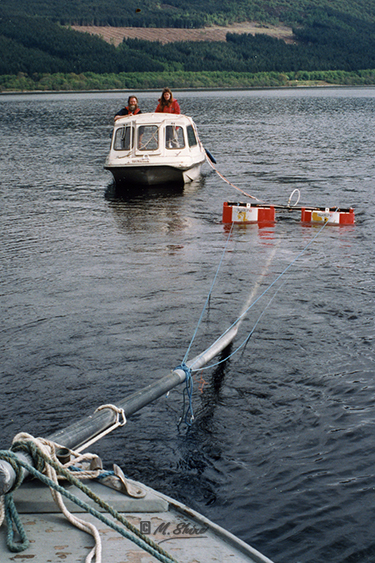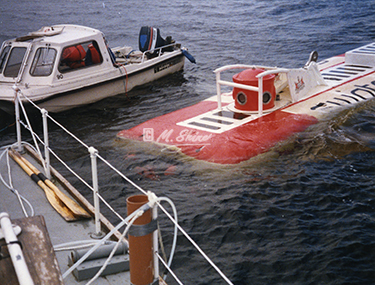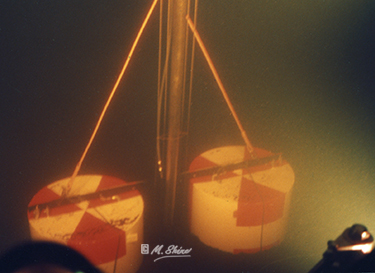The ROSETTA Project sediment core sampler. Loch Ness, 1994
In 1994 our ROSETTA Project drilled 6m long ‘time capsule’ sediment cores from the bed of Loch Ness.
The acronym ROSETTA stands for:
Recovery Of Sediments Enabling Translation To Acoustics and was designed to complement a Loughborugh University seismic design study named REBECCA.
Our challenge was to design a machine capable of driving a core sampling tube at least 6m into the flat sediments in the centre of the 200m northern basin of Loch Ness.
Two drum-like suction anchors were lowered to the loch bed. Water was then pumped out, drawing them into the sediment and providing a firm base. Above the machine a one-ton salvage lift bag, was inflated underwater, forcing the core barrel downwards past a piston by steel wires acting through pulley blocks mounted on the ‘trunnion’ towards the base of the machine and also within the barrel. The trunnion swivelled to allow the long core barrel to be brought to the horizontal for towing to station and retrieval. Compressed air was injected into the suction anchors to bring the apparatus to the surface.
Two cores successfully penetrated to the 10,000 year old late glacial sediments in 1994 assisted by the SWATCH Loch Ness Submarine.

Skipper John Minshull tows ROSETTA home
with Ecos. Adrian and Maralyn Shine steady the drums and the precious 6m core
Back to Tools of the Trade
©A and M SHINE |

'Ecos' the main Loch Ness Project boat with a small dayboat anfd the Loch Ness Submarine.

ROSETTA embedded in the loch bottom at 200m.
|

